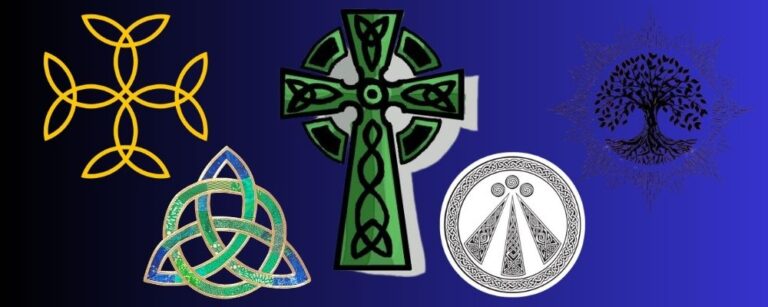We often talk about the important role symbols played in the Viking world and have dedicated articles to explaining the meaning behind important symbols such as the Valknut, Vegvisir, and Mjolnir.
Many of these symbols inspire the designs of our Viking jewelry.
Since launching our Celtic jewelry line we have been learning more about the complex world of Celtic symbols.
They are more difficult to decipher than those from the Viking world as many examples survive in a Christian context in which they have been mixed with Christian ideas.
The Christian cross combines with the cross of the sun wheel and the sacred Celtic number three is linked to the Holy Trinity.
Despite this difficult history to unravel, we can identify some of the most important symbols from the Celtic world and some of their associations and meanings.
Below we provide a brief introduction to ten important symbols from the Celtic world.
Hopefully, they will help you find pieces in the collection that appeal to your personal journey and values.
Celtic Cross
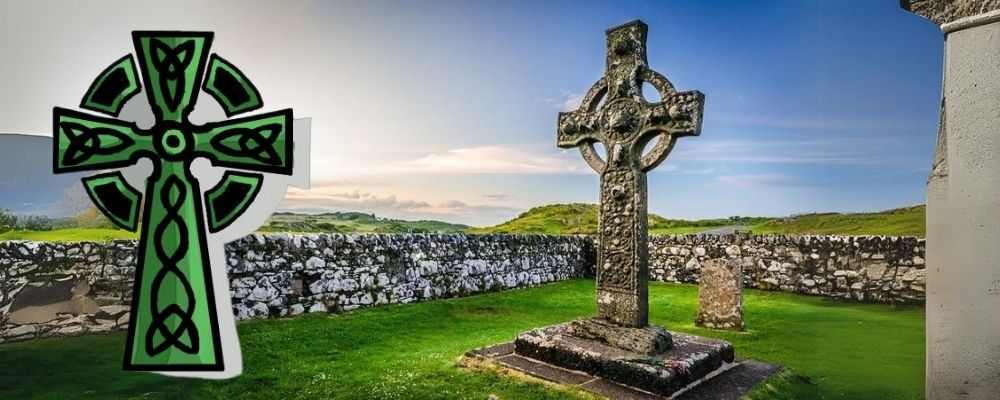
The Celtic Cross emerged when paganism and Christianity met in the Celtic world.
It fuses the Christian cross and the pagan sun wheel, combining the symbol of crucifixion and forgiveness and the life-giving power of the sun.
It first appeared in the Early Middle Ages in Ireland with Saint Patrick who used the symbol to teach his pagan followers the meaning of the cross.
It inspired many of the stone crosses erected in Ireland.
There is some evidence that the Celtic Cross existed before Saint Patrick and that the four sections created by the circle enclosing a portion of the cross represent the four elements, earth-air-fire-water, the four cardinal directions, north-south-east-west, the times of day, morning-evening-dusk-dawn, and the four energies, nature-self-wisdom-divine.
In the earliest examples of stone Celtic crosses, the panel of the cross was inscribed with nature or geometric symbols or with Celtic texts.
Over time, these were replaced by Biblical scenes.
Triquetra
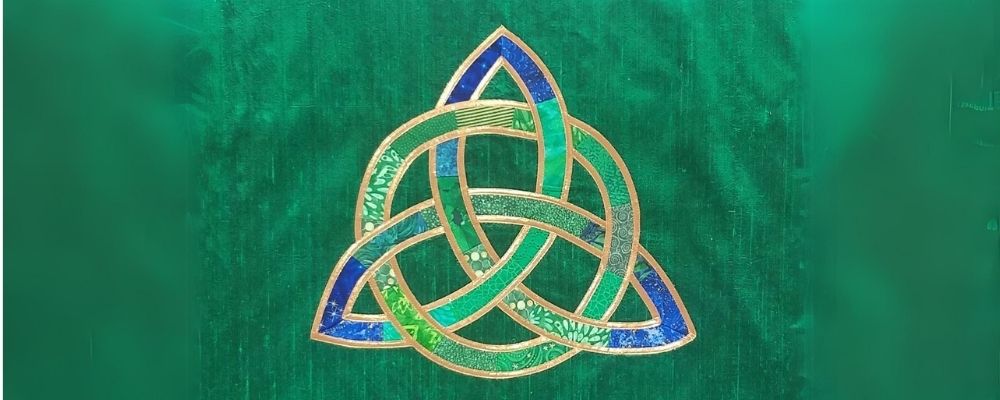
The Triquetra appears in many cultures and consists of three-pointed loops drawn in a triangular shape, with each point corresponding to a corner of the triangle.
It symbolizes eternity and interconnectedness. It also represents several of the triads in Celtic theology including the division between land, sea, and sky, the cycle of life, death, and rebirth, and also the triple goddess The Morrigan, the goddess of battle and strife.
It first appeared around the 4th century BC on carved stone monuments, woodwork, and jewelry.
It also appears on the cover of the Book of Kells, a 9th-century illuminated manuscript.
It has become a universal symbol of modern paganism.
Tree of Life

Called Crann Bethadh signifies how the forces of nature come together to maintain balance in the universe.
It embodies strength, wisdom, and endurance, just like a tree that grows tall and strong, adapting to the changing seasons.
It represents the three stages of life: birth, death, and rebirth. This cycle mirrors the changing seasons as the tree sheds its leaves in autumn, becomes dormant in winter, and sprouts new leaves in the spring.
The tree is usually imagined as an oak, which was sacred to the ancient Celts and believed to house their gods and ancestors.
It was traditional to plant an oak tree in the center of new settlements.
Carolingian Cross

Also known as the Cross of Triquetras, the Carolingian Cross is made from four interconnecting triquetras.
This is another Christian symbol influenced by Celtic culture that connects the idea of the Christian cross with the idea of the tree of life, representing the past, present, and future.
It dates from around the 9th century.
Sacred number theory was important in Christian art during the Middle Ages.
This geometry reflects the belief that the universe operates according to an ordered design and that numerical geometric representations are a manifestation of divine providence.
The number four and quadratic shapes are examples of the creator’s mind.
Four represents the four elements, the changes of the seasons, and the cycle of the motions of the stars and the heavens.
Triskelion
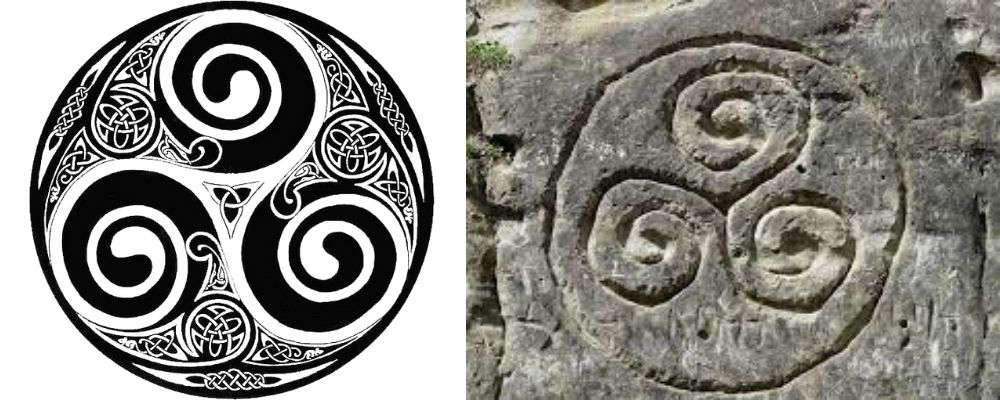
Also known as the Celtic spiral, the Triskelion is made from three interconnected spirals.
The symbol predates the Celts by about 2,500 years but became significant in Celtic culture.
It appears on megalithic monuments like the Newgrange tomb in the Boyne Valley, Ireland.
The Celts believed that everything happens in three and that it was a sacred symbol representing the essential cycles in life including birth-life-death, the celestial-physical-spiritual, and heaven-earth-purgatory.
Wheel of Taranis
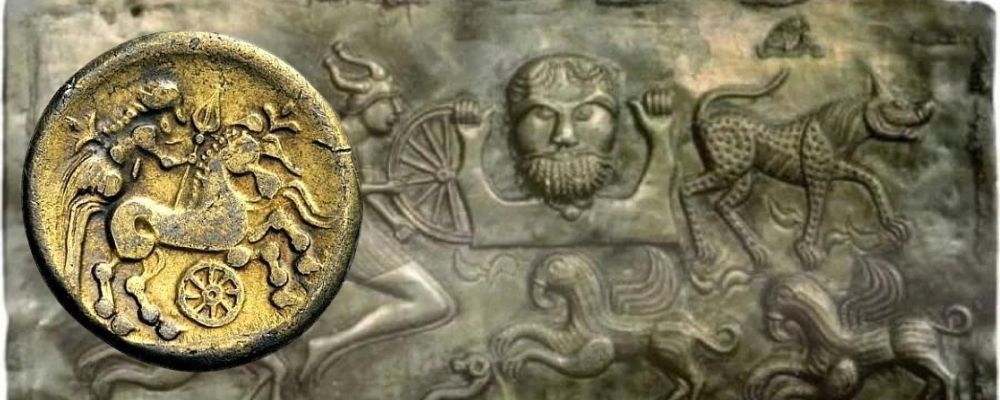
The Wheel of Taranis is a chariot wheel with six or eight spokes associated with the Celtic goddess Taranis, a god of the sky, sun, and thunder.
He is often associated with the Greek god Zeus, the Roman god Jupiter, and the Norse god Thor.
This is an important symbol in Druidry.
The hub of the wheel signifies the center of the universe and the concept of eternal return and natural cycles.
It was often worn as a protective amulet. Images of the wheel are found throughout the Celtic world, including in combination with inscriptions referencing Taranis.
Awen
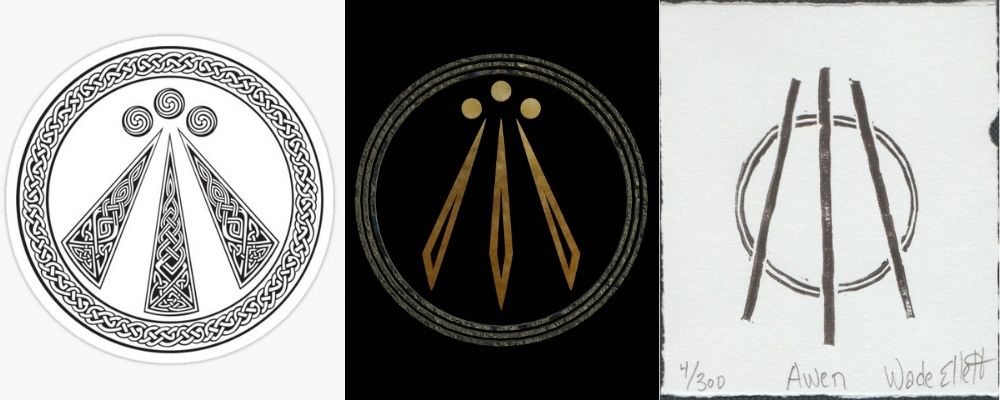
The word Awen translates as “inspiration” in Welsh, Cornish, and Breton, and it is often associated with dreams and artistic prowess.
Celts attributed the skills of artists and creatives to Awen, seen as a muse-like energy that grants divine inspiration.
The symbol features three rays of light representing different aspects of the divine and natural world such as earth-sea-air, body-mind-spirit, and love-wisdom-truth.
Serch Bythol
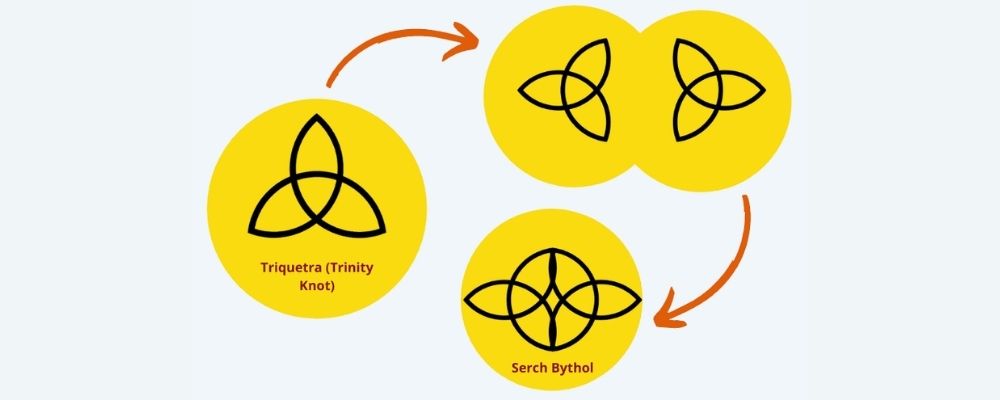
Serch Bythol is a symbol of love, loyalty, and friendship and represents a bond that cannot be broken.
It is made from two triskeles and represents two people who are joined forever in body, mind, and spirit.
Brigid’s Cross
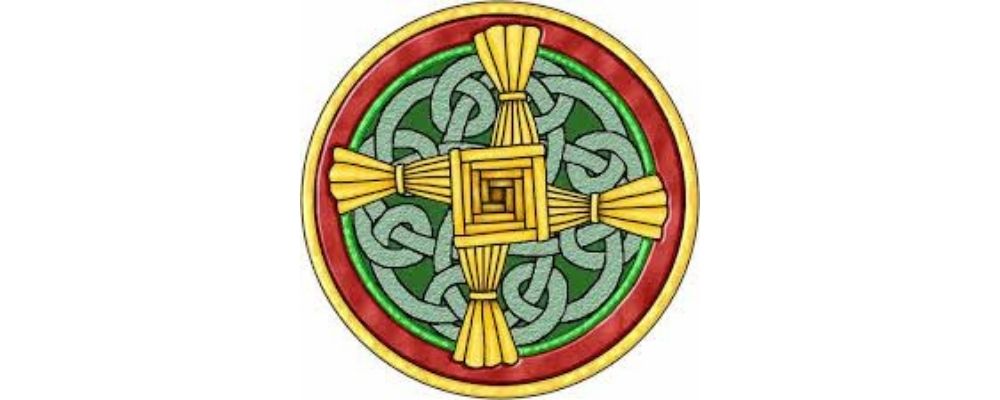
Brigid’s Cross is another blend of pagan and Christian beliefs.
It is associated with the goddess-turned-saint Brigid.
The goddess Brigid of the Tuatha de Danann was a life-giving goddess associated with the onset of spring, creativity, wisdom, healing, and poetry.
She was closely linked with fire, thought of as both a productive and destructive force. Brigid’s Crosses are intricately woven from rushes or straws placed on doors and in the rafters to ward off fire and evil.
Five Fold Symbol

The Five Fold Symbol is made from five rings with a central ring surrounded by four others.
The symbol is linked with the Tuatha de Danann, the children of the Irish goddess Danu.
The central circle represents Danu while the surrounding rings represent her offspring, Nuada, Lugh, Dagda, and Fal.
These deities gave gifts to the Celts such as the sword, spear, cauldron, stone, and cord.
The druids often used it as a focal symbol for meditation.
Celtic Symbols
What do you think of the symbols of the Celtic world and how do they compare to the symbols of the Viking world ?
